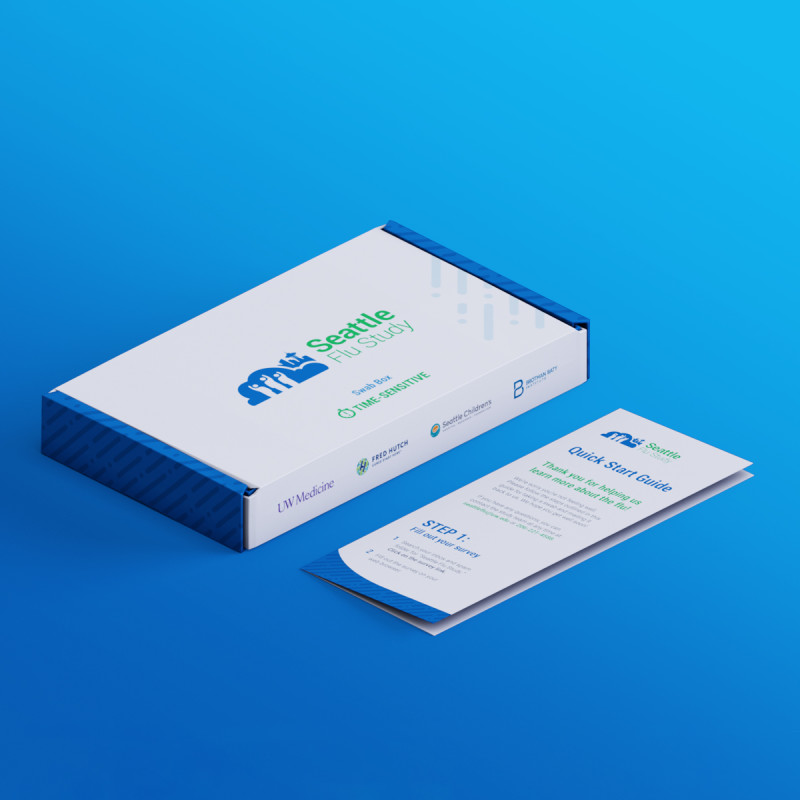Challenge & Opportunity
How are contagious diseases spread within our communities? How can we better detect, control, and monitor them to prepare for future outbreaks?
Up to 80,000 people die in the United States from the flu each year, and more than 30 million people get sick and suffer. We know that the flu is spread from person-to-person, and we know that it causes outbreaks every year. What we don’t know is exactly how it spreads, and why certain flu strains are stronger and more dangerous than others. The Brotman Baty Institute (BBI) and the University of Washington, with other partners and funders, are on a mission to change that.
By recruiting between 20,000 and 30,000 residents of the greater Seattle area, the Seattle Flu Study team set out to create a first-of-its-kind citywide network for early detection and tracking of influenza, providing invaluable information to public health officials to help them better understand more about the flu, and to curb its spread. A foundation of this study was an innovative at-home test for influenza that allowed people to self-test for the flu without leaving their homes – keeping them healthier, and others safer.
Solutions & Outcomes
How do you spread the word about an academic research study to a non-academic audience? How many ways can you market the flu?
The Formative team collaborated to develop a visual brand system and messaging framework used to inform collateral, promotional materials, advertisements, and other content for engaging users, pharmacists, physicians, and more; a light web presence for test users to learn about the Seattle Flu Study; a channel recommendation on how the study could engage new users in various U.S. markets; and a POV and recommendation on providing incentives for individuals to participate. We workshopped the core elements of what the flu study brand should be, staking out a brand territory and clarifying any of the ‘must-haves.’ The workshop allowed for an important collaborative stage of the project, where our team was able to define messaging territories that the Flu Study should occupy, given its multi-faceted aims of engaging physicians, clinics, and the general public. From that workshop, we built messaging pillars to define a narrative for the study that helped dovetail a new messaging platform to a visual brand system. We then designed and built a web presence to help users understand the program and necessary protocols, and offer FAQs and/or other information required to alleviate any concerns and support likelihood for successful completion of the self-test process. Additionally, we formed an overall measurement, learning, and evaluation (MLE) plan recommendation so that the study team could optimize the self-test experience prior to the next flu season.
We first spent time developing interview guides and conducting IDIs with key stakeholders to understand the best approach to launch. Although just one of many potential brand and campaign strategy inputs, securing this perspective from the sponsor team provided important data points into visual and message development, as well as recommendations on channels for promotion to audience segments. To reach and engage users in various markets throughout the country, we needed to identify audiences, define what digital channels would be used to reach them, recommended the right cadence and optimization schedule for those channels to BBI’s media buying partner, and provided a playbook for how to implement the campaign. To understand the results of the initial flu campaign, including response rates, accuracy in targeting, site traffic and user experience, and incentive optimization, we collaborated on a measurement framework that set the learning agenda, priority KPIs, and an action plan for measuring and optimizing. Throughout this process we worked with multiple partners including an application development firm engaged by the study partners, media partners, and several ‘go to market’ partners including Flu Near You (a national flu-tracking organization).
Today, our work with BBI and the Seattle Flu Study team continues – and has now pivoted to even more critical, timely work: helping understand and slow the spread of COVID-19 as part of the Seattle Coronavirus Assessment Network (SCAN).










